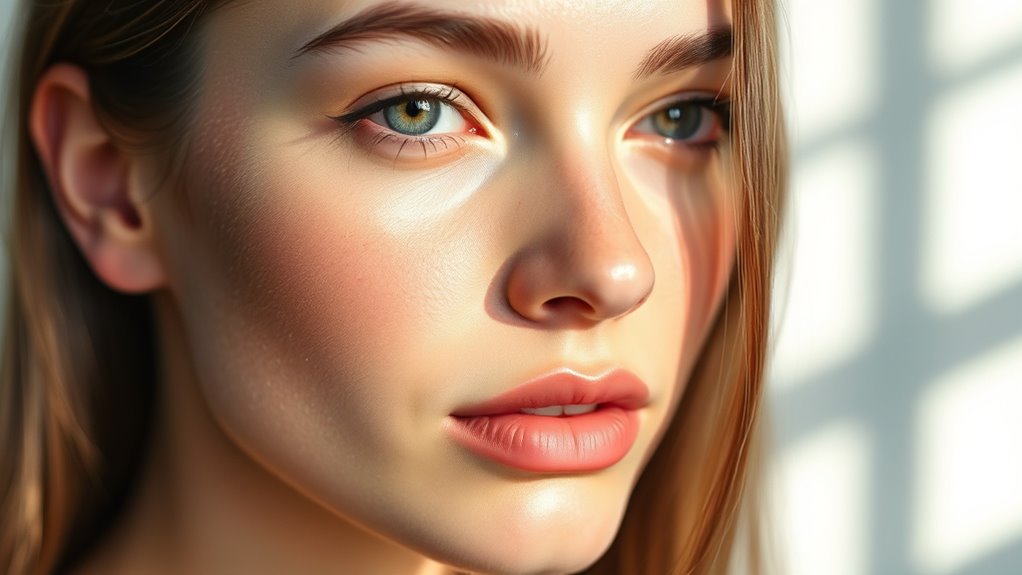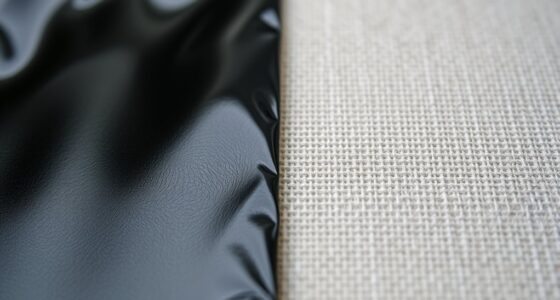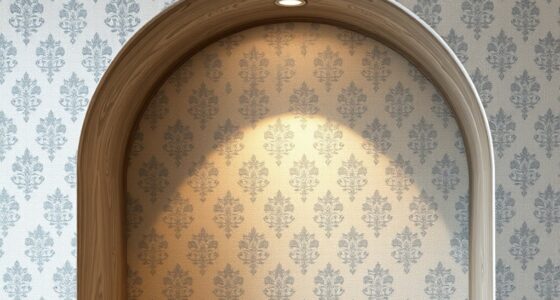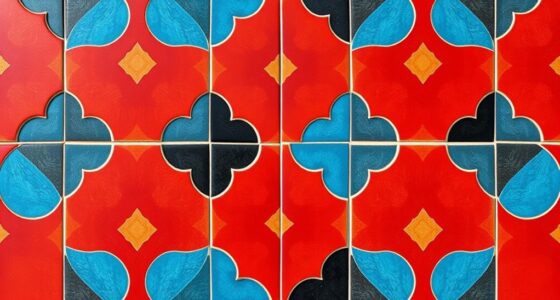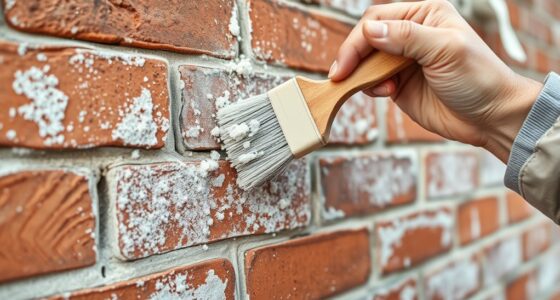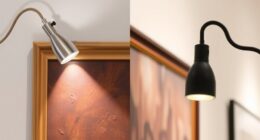Tinted primer helps you by providing a preview of the final color, reducing the number of coats needed, and aiding in color correction, especially for mismatched or uneven surfaces. However, it can hurt if the tint closely matches the final color, giving a false sense of coverage or causing color conflicts. Choosing the wrong hue or relying too much on its tint can lead to uneven finishes. To avoid pitfalls and get better results, there’s more to contemplate.
Key Takeaways
- Tinted primer aids in color correction, reduces coats needed, and enhances final surface uniformity.
- It helps with visualizing the finished look and matching natural skin tones or decor palettes.
- Overly close tint to final color or unwanted hues can cause false coverage and misjudgment of coats.
- Choosing the wrong primer tint may interfere with color accuracy or final appearance.
- Tinted primer is less ideal when precise color matching or neutral base is required to prevent color conflicts.
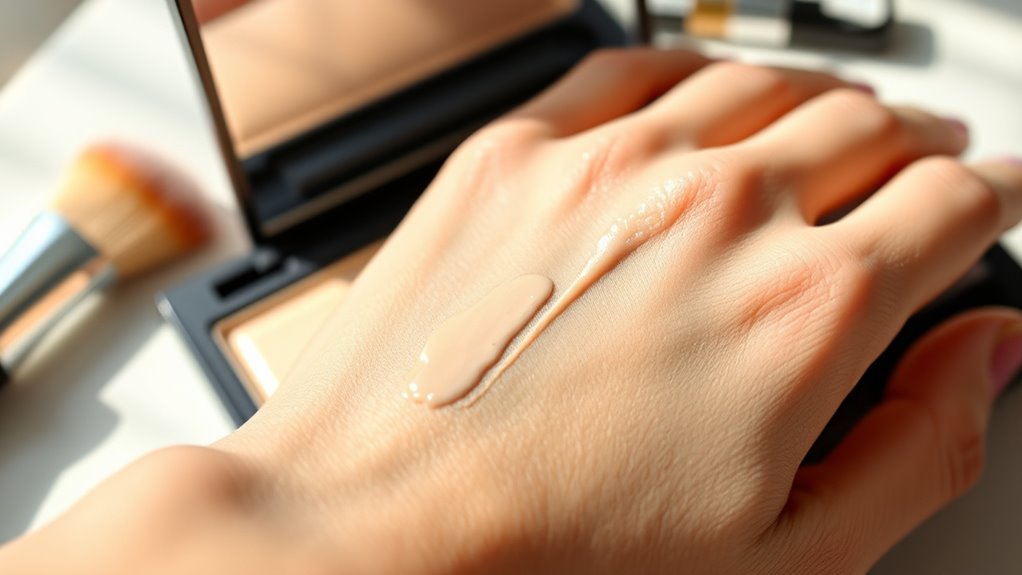
A tinted primer is a versatile product that can simplify your painting process by providing a subtle hint of color while preparing surfaces. Instead of a plain white base, a tinted primer offers a light hue that can help you visualize how the final coat will look and reduce the number of paint coats needed. This feature is especially useful when working with colors that are difficult to cover or when you want to achieve a more uniform finish. When considering tinted primers, one of their primary benefits lies in their ability to assist with color correction. If you’re painting over a surface with uneven or mismatched colors, choosing a primer tinted to a neutral or specific hue can help balance out the discrepancies. For example, if you’re covering a dark wall with a lighter color, a tinted primer in a mid-tone can minimize the number of coats and improve coverage. This not only saves time but also guarantees a more consistent appearance once finished.
When it comes to skin tone, tinted primers can be particularly advantageous in certain applications. For instance, in cosmetic or artistic projects, matching a primer to the natural skin tone can help create a seamless foundation, making subsequent layers of paint or makeup blend more smoothly. In home decor, if you’re aiming for a warm or cool palette, selecting a primer with a matching or complementary tint can set the tone for the entire project, reducing the risk of colors appearing off or muddled. However, it’s essential to understand when tinted primers might not be beneficial. If you choose a tint that’s too close to the final color, it could give a false sense of coverage, leading you to underestimate how many coats you’ll need. In such cases, the primer might actually hinder the process by making the surface appear more uniform initially, only to reveal uneven coverage after painting. Additionally, the visualization of final results can be affected if the primer’s tint influences how the topcoat appears once applied.
Additionally, tinted primers can sometimes complicate your project if you aren’t careful with color selection. For example, choosing a primer with an unwanted hue can alter your intended final color, forcing you to apply more coats or correct the tone later. If you’re working with delicate shades or precise color matching, it’s vital to select a primer that complements your final paint color rather than conflicts with it. Overall, tinted primers are a valuable tool when used correctly, especially for color correction and skin-tone matching, but they can become an obstacle if chosen improperly or used in situations where a neutral primer would be more appropriate.
Frequently Asked Questions
Can Tinted Primer Be Used on Textured Walls?
Yes, you can use tinted primer on textured walls, but it depends on your goals. If you want to enhance the texture, a tinted primer can help with that. It also offers color correction, so if your wall color is uneven or stained, it provides a good base. Just make sure the texture isn’t too rough, which might make applying the primer difficult and affect the final finish.
How Long Does Tinted Primer Typically Last?
Think of tinted primer like a mood ring—its color retention depends on application methods and surface. Typically, it lasts 3 to 5 years if applied correctly on properly prepared surfaces. I once used tinted primer on a feature wall, and with good preparation, it kept its color vibrancy for years. Proper application and quality paint guarantee your tinted primer’s longevity, so you get the most out of your investment.
Is Tinted Primer Suitable for Outdoor Painting Projects?
Yes, tinted primer is suitable for outdoor painting projects. It helps with color matching and provides better surface coverage, which is essential for outdoor surfaces exposed to the elements. You’ll find it enhances the durability of your paint job and ensures even color application. Just make sure to select a primer formulated for exterior use, and properly prepare your surface for the best results.
Can Tinted Primer Be Mixed With Regular Primer?
Ever wondered if you can mix tinted primer with regular primer? Yes, you can! Mixing them helps with color matching and can boost coverage enhancement, especially if you need a specific hue or want to save money. Just make certain you blend thoroughly for an even color. Keep in mind, though, that mixing too much might alter the primer’s original properties, so it’s best to test small amounts first.
Does Tinted Primer Require Special Cleaning Tools?
Yes, tinted primer requires special cleaning tools to prevent color transfer and maintain its quality. Use soft brushes or brushes specifically designated for primer to avoid contamination. After painting, clean your tools thoroughly with warm, soapy water or the recommended solvent. Follow proper maintenance tips by cleaning tools immediately after use, storing them properly, and avoiding cross-contamination with other paints. This guarantees your tools stay in good shape and your projects turn out flawless.
Conclusion
Remember, tinted primer is like a double-edged sword—great when it’s the right fit, but it can cut you if misused. When you need extra coverage or color correction, it’s your trusty shield, saving time and effort. But if your skin tone doesn’t match or you crave a natural finish, it’s better to leave it on the shelf. Use it wisely, and you’ll find it’s a powerful tool in your makeup arsenal.
